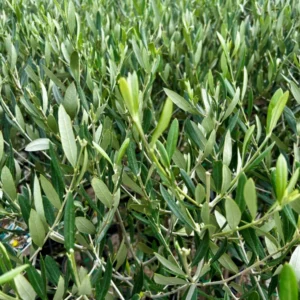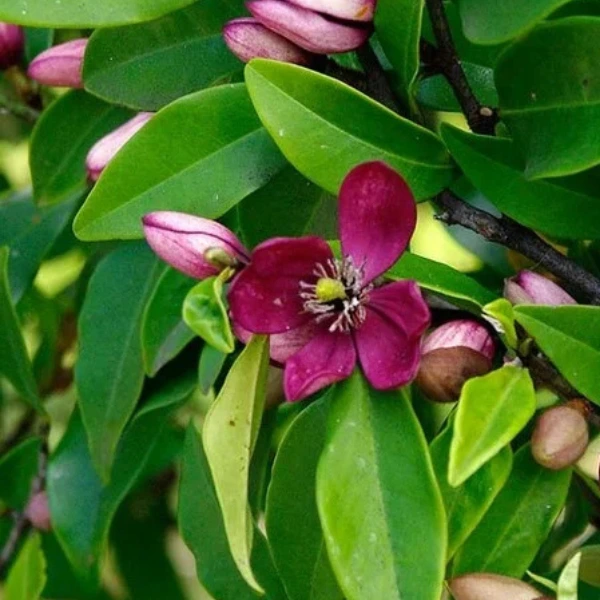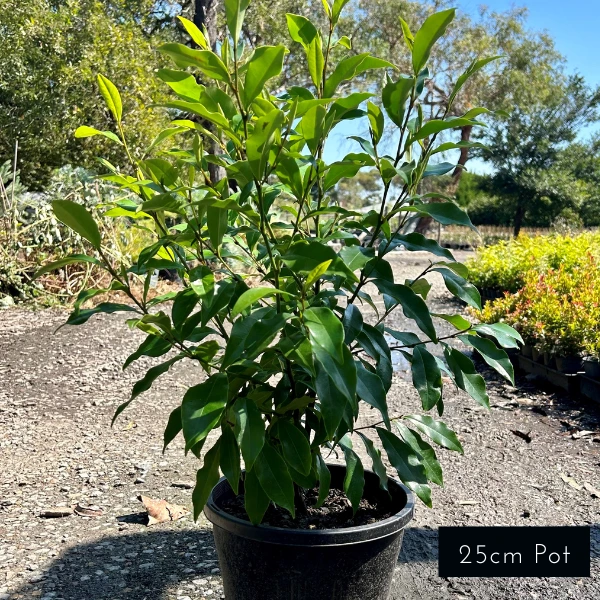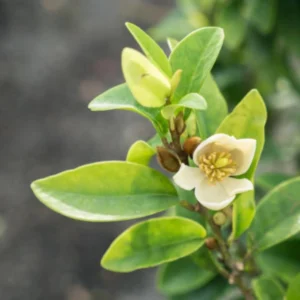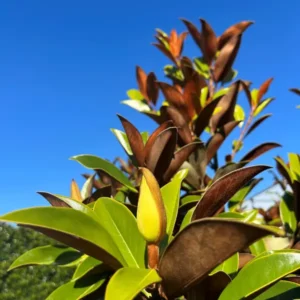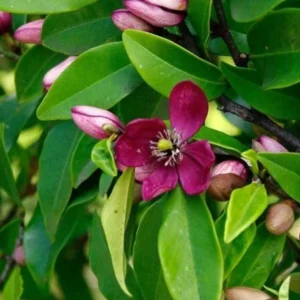The Port Wine Magnolia is a stunning evergreen shrub with glossy foliage and rich, fruity-scented flowers. Its small, creamy blooms edged in burgundy appear from spring through summer, filling the garden with a beautiful, port wine-like fragrance. Ideal for hedging, screening, or as a feature plant, it’s hardy, low-maintenance, and thrives in a sunny to partly shaded position with protection from harsh afternoon sun.
Product Specifications
- Common Name: Port Wine Magnolia, Purple Magnolia
- Botanical Name: Michelia figo port wine
- Mature Height: 2-4 meters
- Mature Width: 1.5–3 metres
- Planting Distance: Approx 1 meter apart for a hedge
- Foliage: Evergreen, glossy dark green leaves
- Flowering Period:
- Flower Colour: Small, creamy blooms with burgundy edges, highly fragrant
- Form/Habit: Upright, compact, bushy
- Uses: Small – Medium screening hedge, potted plant, specimen tree, courtyard gardens
- Evergreen/Deciduous: Evergreen
- Water Needs: Water while establishing and during warmer months
- Soil type: Well-drained, fertile soil
- Sun: Full sun to partial shade
- Maintenance: Low; benefits from light prune after flowering, mulch in warmer months, and occasional feed in spring
- Planter Suitability: Yes, allow room for growth with a well-draining planter
- Australian Native: No
Commonly Asked Questions
How tall and wide does Port Wine Magnolia grow?
It typically grows to around 2–4 metres tall and 1.5–3 metres wide, depending on growing conditions and how it’s pruned. It responds beautifully to trimming if you’d like to keep it as a hedge or a more compact shrub.
How far apart should I plant Port Wine Magnolias for a Screening Hedge?
For a dense screening hedge, plant Port Wine Magnolia around 1 meter apart. If you’re after a really quick, tight hedge, you can go a little closer at around 80cm apart, but generally 1 metre gives them enough room to grow into a lush, healthy screen without overcrowding
Are Port Wine Magnolias easy to maintain?
Absolutely! Port Wine Magnolia is hardy, low-maintenance, and drought-tolerant once established. It prefers a sunny to part-shaded spot with well-drained soil and benefits from a light prune after flowering to keep it neat and encourage bushy growth.



